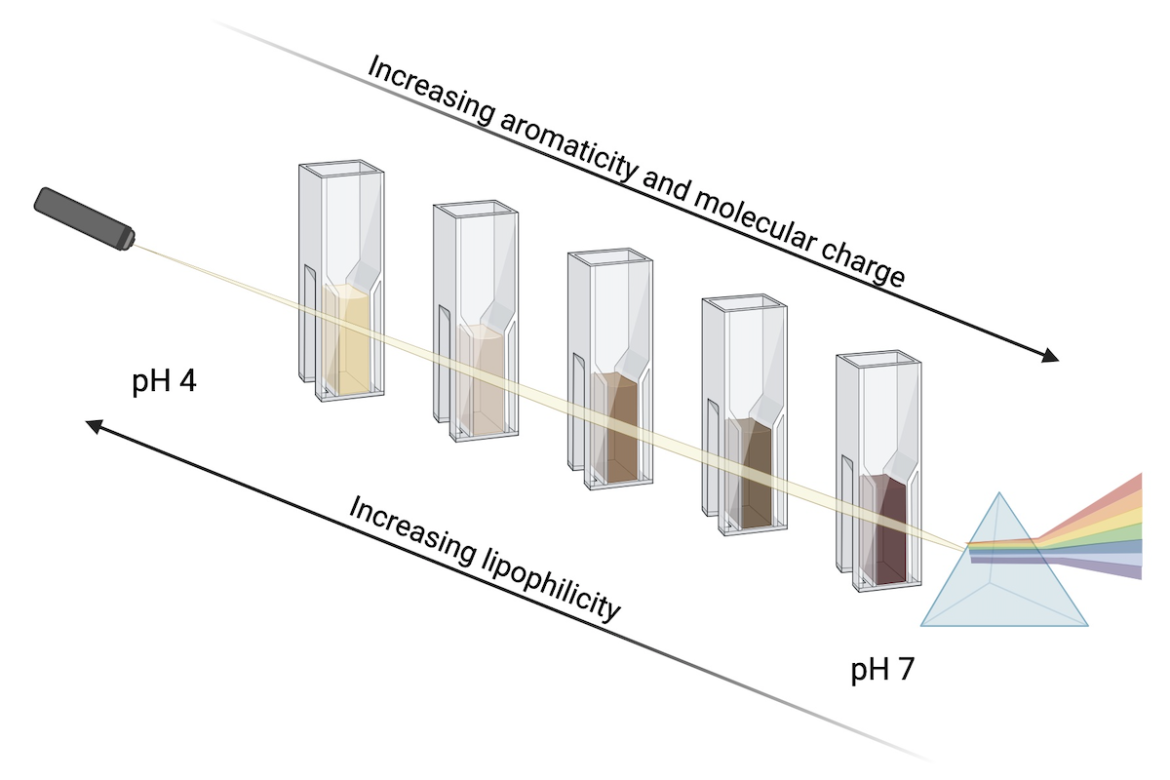
ABSTRACT
Environmental context: Dissolved organic carbon (DOC) is ubiquitous in freshwater and concentrations are rising universally while pH is decreasing with climate change. This study demonstrates the interrelationships among DOC characterisation techniques and the pH-sensitive aspects of these techniques that were previously not well understood. As DOC regulates important processes within ecosystems, understanding DOC behaviour at altered pH and identifying techniques to effectively evaluate DOC composition are critical requirements for monitoring aquatic ecosystem health.
Rationale: Dissolved organic carbon (DOC) is both ubiquitous and heterogeneous in freshwater. Freshwaters are browning universally and pH values are decreasing with climate change. DOCs influence water pH, whereas changes in water pH potentially alter the conformation and function of DOCs. The physicochemical properties of DOCs can be characterised by optical and chemical indices, but the inter-relationships among them, and the effects of low pH, are not well understood.
Methodology: We characterised five naturally sourced DOCs, spanning large differences in origin and composition, at pH 7 and 4, using multiple indices: specific absorbance coefficient at 340 nm, molecular weight index, fluorescence index, octanol–water partition coefficient, molecular charge, proton binding index, size-fractionation, and percentage humic-acid-like, percentage fulvic-acid-like and percentage protein-like components by fluorescence-based parallel factor analysis.
Results: Many of the indices changed between pH 7 and 4 as reflected in the corresponding absorbance and fluorescence profiles. Generally, apparent aromaticity, apparent molecular weight and molecular charge all decreased with low pH, while lipophilicity increased. Key positive correlations occurred between aromaticity and apparent molecular weight, chemical reactivity and apparent molecular weight, and aromaticity and chemical reactivity, and a negative correlation between lipophilicity and molecular charge. These relationships were pH dependent.
Discussion: Our results highlight that physicochemical indices used to characterise DOCs from distinct sources should consider pH and be interpreted carefully. The pH-dependent changes in many of the indices are likely alterations in the conformation, reflected in the optical signatures, rather than changes in the composition of DOCs. In contrast, increased lipophilicity and reduced charge at lower pH are due to actual changes in DOC molecules, resulting from proton binding. The ecological functions of DOCs are dependent on source and will likely change with natural acidification events such as increasing atmospheric CO2.